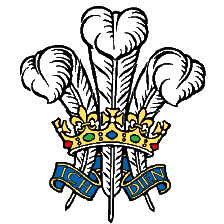Oak processionary moth Thaumetopoea processionea (OPM) was accidently introduced in 2006, believed to have arrived on oak saplings from Holland. Cases have been found in parts of London, Surrey and Berkshire (to date May 2016). The caterpillars feed on the leaves of several Quercus (oak) species and in high numbers can strip bare whole parts of the trees. This leaves the tree vulnerable to other pests and diseases and less likely to be able to deal with any environmental changes such as drought. They have also been seen to feed on other trees including Hornbeam and Birch but only if the oak leaves are in very short supply.
The caterpillars have thousands of tiny urticating hairs that contain thaumetopoein, contact with these hairs can cause an itching skin rash and in some cases a sore throat , eye problems and breathing difficulties.
Causes
Caterpillars of the Oak processionary moth
Symptoms
Easily recognised by their train like processions (nose to tail) in late spring / early summer, these are often wedged shaped with a single leader and rows of caterpillars following.
White webbing nests can be seen either on the branches or trunks of trees, this is where the caterpillars congregate during the day as they mainly feed at night. These nests will not be amongst the leaves.
Loss of foliage
With our weather becomes milder and frosts become less frequent there is a possibility the moths could spread thoughout England and Wales.
surveying is carried out throughout the winter in affected or at risk areas, this is to search for any old nests which could give a good indication of possible new nests in the spring, In areas already infected surveys are carried out in the spring and any nests and larvae are removed and destroyed. Pheromone traps are used in late summer / early autumn, any moths caught can also be a good indication of possible areas that may have outbreaks in the spring.
In order to import Quercus, oak you must have a plant passport, all imports must be notified to the UK plant health authorities so inspections can be carried out
The moth itself has no real distinguishing features so would be hard to spot, if you think you have seen the caterpillars or indeed the nests then report it, do not touch the caterpillars or attempt to remove nests yourselves.
For more information on Oak processionary moth please visit Forestry.gov


